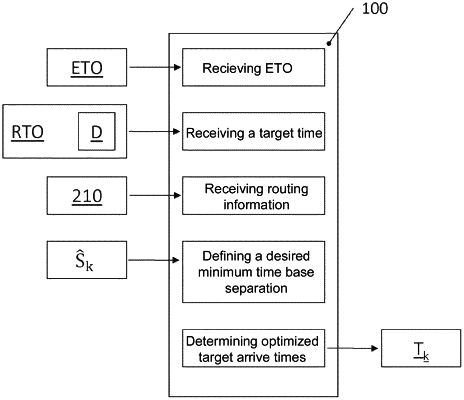| CPC G08G 5/003 (2013.01) [G08G 5/0043 (2013.01)] | 19 Claims |

|
1. A method for optimizing a stream of at least two aircraft forming at least one aircraft pair, wherein each aircraft enters a predefined airspace, via an individual or common entry waypoint, and wherein each aircraft approach a common predefined merging waypoint, the method comprising:
receiving an estimated entry time for each aircraft at the individual or common entry waypoint,
receiving a target time for each aircraft to arrive at the common predefined merging waypoint, wherein said target time comprises a delay to be absorbed before reaching the common predefined merging waypoint,
receiving routing information for each aircraft comprising waypoints for routing said respective aircraft from the individual or common entry waypoint to the common predefined merging waypoint, wherein the waypoints comprise one or more dedicated waypoints,
defining a desired minimum time based separation for each pair of aircraft from each other, and
determining optimized target arrival times at the one or more dedicated waypoint for the at least two aircraft utilizing an optimization model considering the estimated entry time, the target time for each aircraft to arrive at the common predefined merging waypoint, and the desired minimum time based separation, wherein the optimized target arrival times are determined such that the delay to be absorbed for each aircraft is shared between route segments defined by the one or more dedicated waypoints,
wherein the optimization model utilizes the desired minimum time based separation as a soft constraint.
|